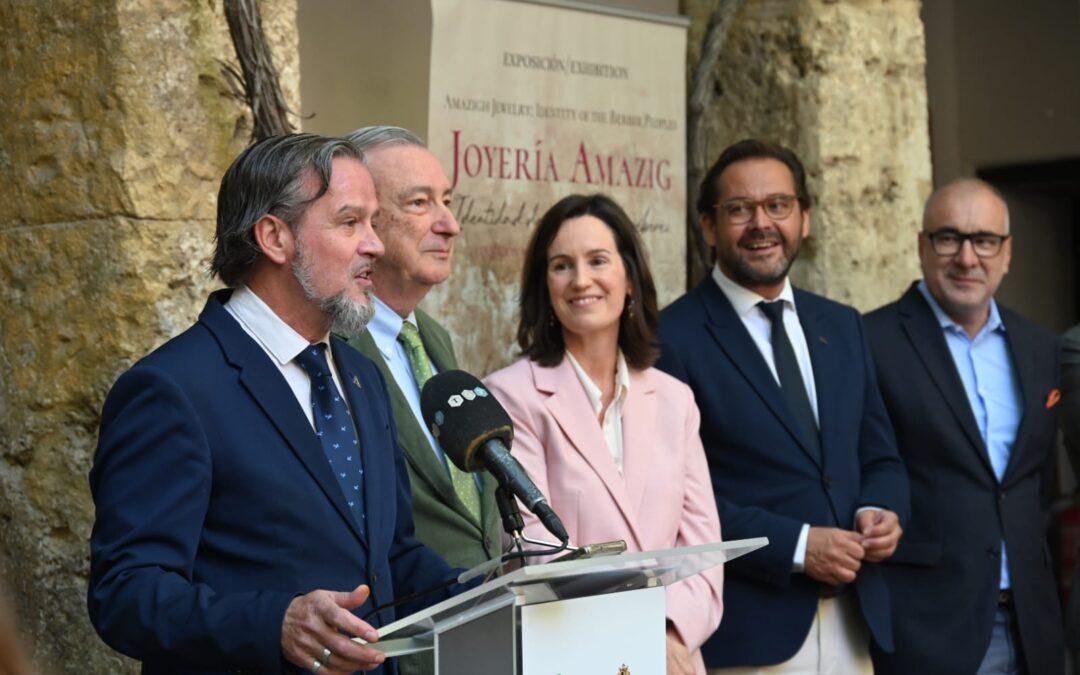On Wednesday, June 12 at 11:00 a.m., the inauguration of the exhibition Amazigh Jewellery: Identity of the Berber Peoples took place in the city of Granada. The event was attended by notable figures including the Vice Minister of Tourism, Culture, and Sports of the Andalusian Regional Government, Víctor Manuel González García; the Mayor of Granada, Marifrán Carazo; the director of the Andalusian Public Foundation El legado andalusí, María de la Concepción de Santa Ana Fernández; and the owner of the collection, the Spanish Ambassador Jorge Dezcallar de Mazarredo, among other distinguished authorities.
This exhibition, housed at the headquarters of the Andalusian Public Foundation El legado andalusí, delves into one of the key hallmarks of the Amazigh people’s cultural identity: jewellery. The Amazigh, commonly known as Berbers, have inhabited the southern shores of the Mediterranean since ancient times, spanning across the Maghreb. Their territory stretches from the Siwa Oasis in Egypt to the east, to the Atlantic Ocean in the west, and from the Mediterranean coast in the north to the Sahara Desert and the Niger Basin in the south. These are peoples who have historically maintained various forms of contact with the inhabitants of the Iberian Peninsula, particularly during the period of al-Andalus. In Granada, the Amazigh influence was notably significant, such as during the 11th century when a Berber dynasty from present-day Algeria, the Zirids, governed the taifa kingdom of Granada. They relocated their capital from Madinat Ilbira to present-day Granada and contributed numerous structures that still stand today.
Jewellery stands out as one of the most prominent aspects of these communities. Primarily worn by women, these adornments are not limited to special occasions but are also integrated into their daily routines, serving multiple purposes. Apart from embellishment, they serve practical functions due to the absence of buttons or fasteners on their traditional attire. Additionally, they convey information about the wearer’s identity, hold protective significance by warding off negativity and attracting positivity, and even serve as a means of investment, offering a source of savings that can be sold out in times of necessity.
The exhibition on Amazigh jewellery showcases an exceptional collection meticulously amassed by Spanish diplomat Jorge Dezcallar de Mazarredo. Through his extensive travels across various Amazigh nations, he has gathered a remarkable display of approximately 200 pieces of jewellery from diverse locations within Amazigh territory, including Libya, Tunisia, Algeria, and various regions of Morocco such as the Rif, the Atlas, and the pre-Saharan oases. The collection features a diverse range of jewellery including diadems, forehead bands, earrings, pendants, necklaces, pectorals, bracelets, amulets, and brooches. These artifacts provide visitors with a captivating insight into a world that may be unfamiliar despite its geographical proximity.
The exhibition, available for free access, welcomes visitors from Monday to Friday (excluding holidays) between 9:00 a.m. and 3:00 p.m. Additionally, the exhibition is enriched by a collection of nine works by painter Jesús Conde Ayala, depicting various elements of Amazigh jewellery. The display is further complemented by a stunning Berber tapestry on loan from the Secret Berbère Gallery in Granada. For more information: Amazigh Jewellery. Identity of the Berber peoples


